
$599.00
Availability: In stock.
Ships same day, or next business day.
-
Free US Shipping On Orders Over $49
Easy 30-Day Returns
Financing Available Through ![]()

$599.00
Availability: In stock.
Ships same day, or next business day.
-
Create expansive soundscapes and evolving, otherworldly tones. Add layers upon layers of harmonic and rhythmic complexity within an enveloping stereo field. Infuse your rack with vintage warmth and retrofuturistic soul.
Packed with powerful features while maintaining intuitive playability, Magneto is a stereo multi-head tape delay that also functions as a looper, phrase sampler, vintage spring reverb unit, phase-aligned clock multiplier, chaotic oscillator, zero latency sub-oscillator and more, with extensive CV I/O.
Turn simple monophonic signals into complex orchestrations. Create new oscillator tones using self-oscillation. Add rich stereo dimension to your sound, and enjoy the inherent warmth and sweet, subtle distortion characteristics of magnetic tape. Magneto transforms even the smallest rack into a fully expressive, immersive instrument.
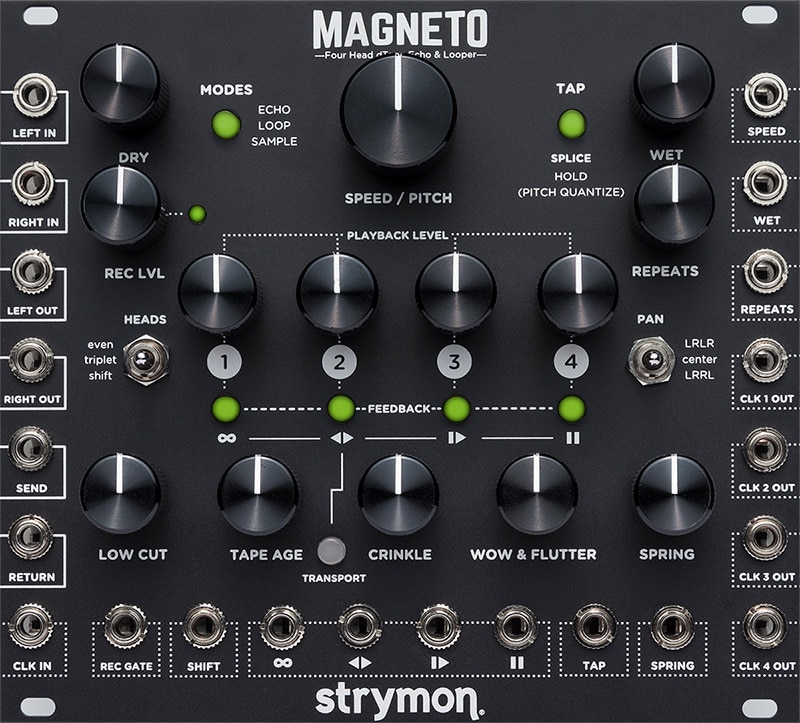
To capture the full experience and complexity of a vintage tape echo machine, every last tape system attribute was relentlessly studied and faithfully recreated. From the sought-after natural saturation and soft clipping of magnetic tape when driven hard, to hands-on real-time controls for tape age, tape crinkle, and mechanical wow and flutter, Magneto delivers a rich multi-head delay experience that adds life and vibe to your sound.
Every function, control, gain stage, and signal path component in Magneto works together to respond musically and smoothly, even during the wildest live modular improvisations. All this is combined with a luxurious spring reverb to take the sound of your modular setup to a new level, and your sonic explorations into far-out territories.
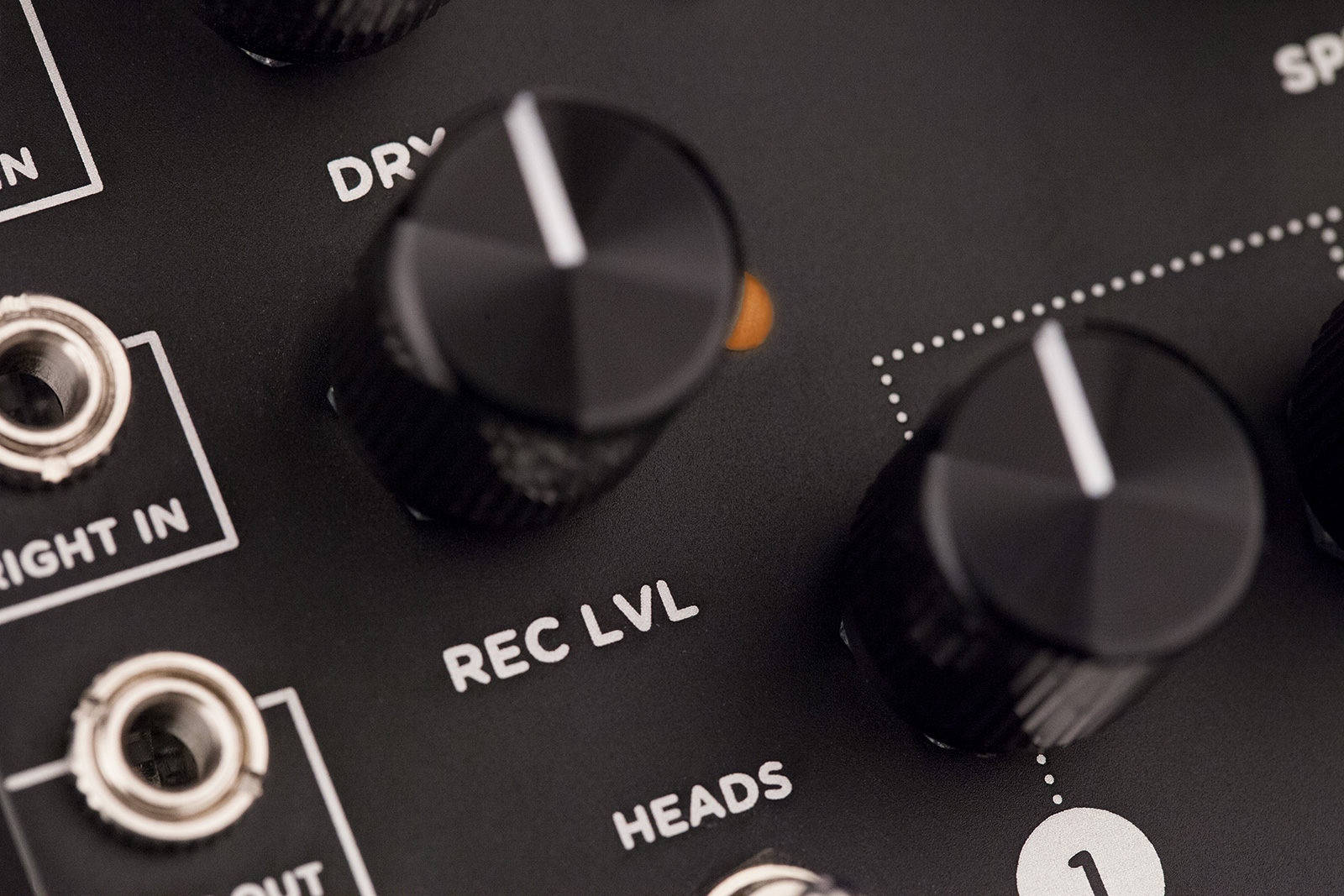 Not only does Magneto deliver the warm, luscious delay signals that tape delays are known for, it is also capable of a high degree of saturation.
Not only does Magneto deliver the warm, luscious delay signals that tape delays are known for, it is also capable of a high degree of saturation.
Turn up the Record Level knob to send a hot signal to the record head for any amount of tape saturation you desire.
Turn up the Tape Age control for warmer repeats. Add some truly beautiful Spring Reverb.
Magneto adds organic heart and soul to the sound of your modular.
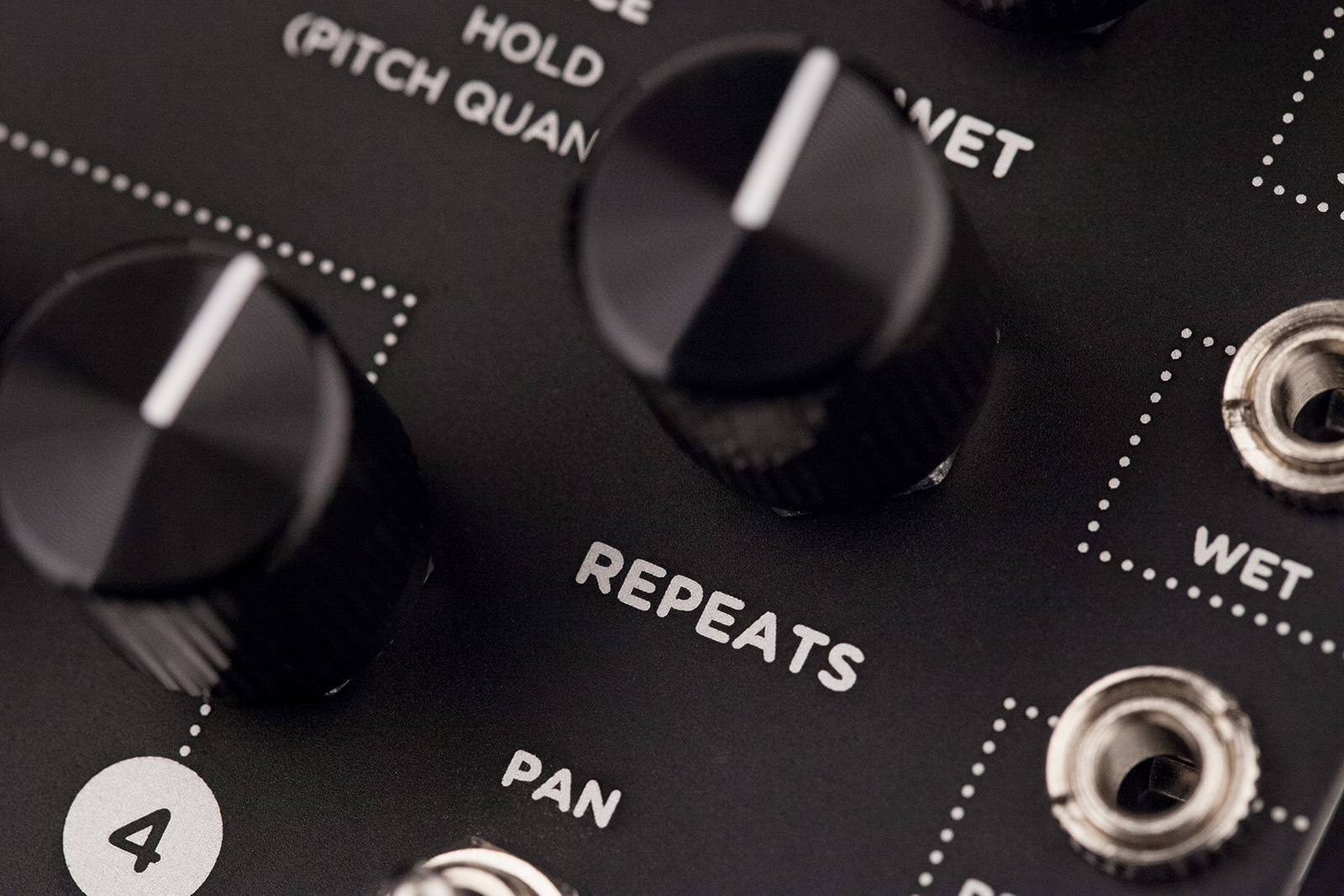 Tap in a fast delay time, crank up the REPEATS knob, and Magneto launches into beautifully singing self-oscillation.
Tap in a fast delay time, crank up the REPEATS knob, and Magneto launches into beautifully singing self-oscillation.
Magneto will find evolving tonalities determined by the SPEED/PITCH setting (knob or 1V/octave CV), and the LOW CUT and TAPE AGE knobs.
Press the INFINITE transport button to capture a particular tonality.
Switch to Pitch Quantize mode and as you turn the SPEED knob, Magneto will play within any of 15 selectable scales.
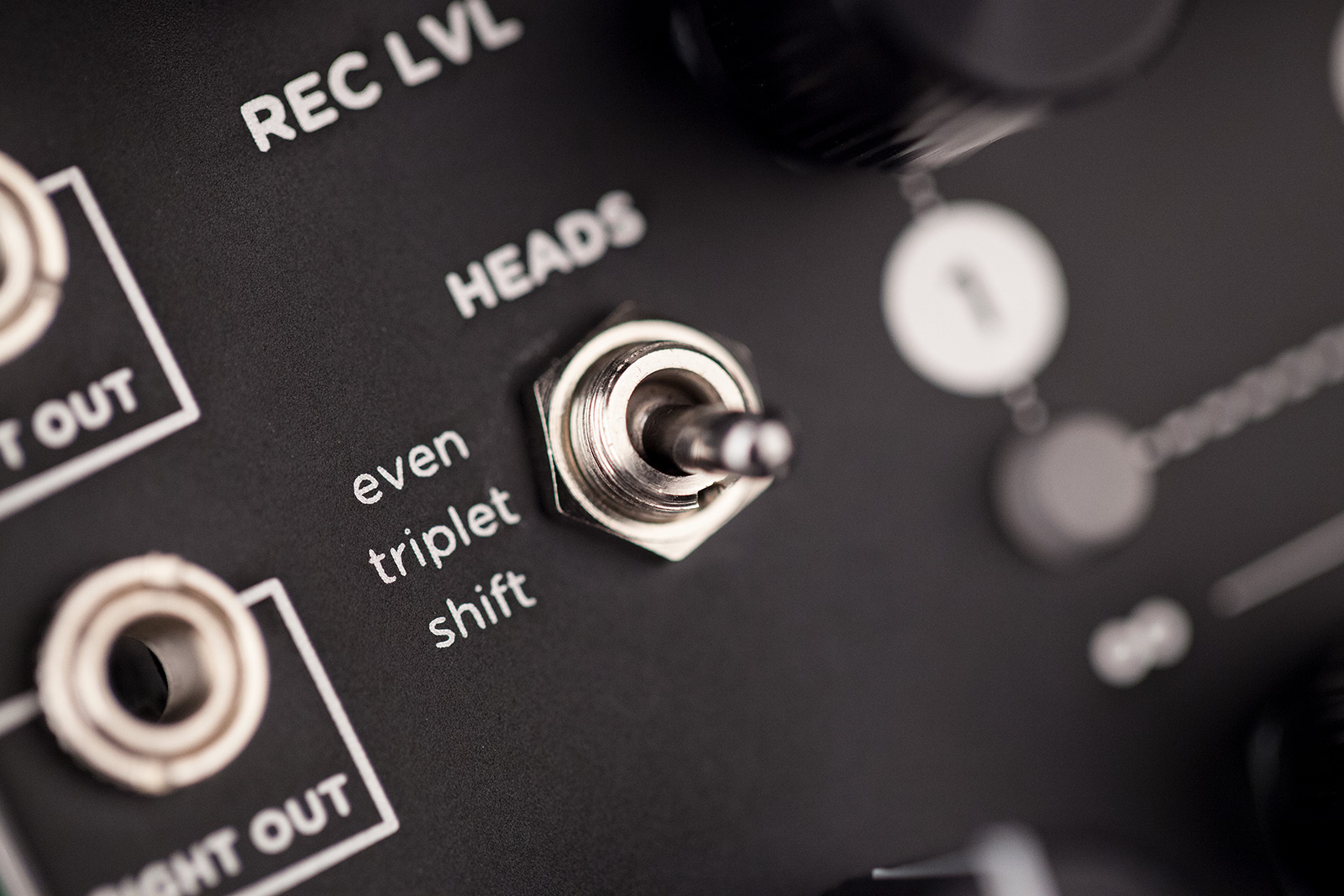 In SHIFT mode, Magneto creates rhythmically pitched delays by changing the playback speed of each of the playback heads.
In SHIFT mode, Magneto creates rhythmically pitched delays by changing the playback speed of each of the playback heads.
Head 1 plays back up one octave and a fifth at 3x speed, Head 2 plays up one octave at 2x speed, Head 3 plays down one octave at half speed (creating deep bass sounds), and Head 4 plays quarter note repeats with no pitch shift.
Use SHIFT mode to make things bigger and deeper, and to add melodic and rhythmic content.
In SHIFT mode, Magneto is also easily configured as a powerful zero-latency sub oscillator: Just run your gate signal to the Restart CV input and blend in only Head 3 with the DRY signal.
 Some of the classic tape echo machines included small integrated spring reverb tanks tuned to limited bandwidth.
Some of the classic tape echo machines included small integrated spring reverb tanks tuned to limited bandwidth.
For Magneto, we captured this vintage vibe while creating a flexible, beautiful spring reverb that stands on its own, in addition to enhancing delayed signals.
The reverb circuit’s gain structure is designed so that when pushed hard, it will trash up nicely to hold its own with the funkiest lo-fi units, but when the input level is backed off, the reverb has a gorgeous, gentle character that enhances even subtle passages in a sophisticated and spacious way.
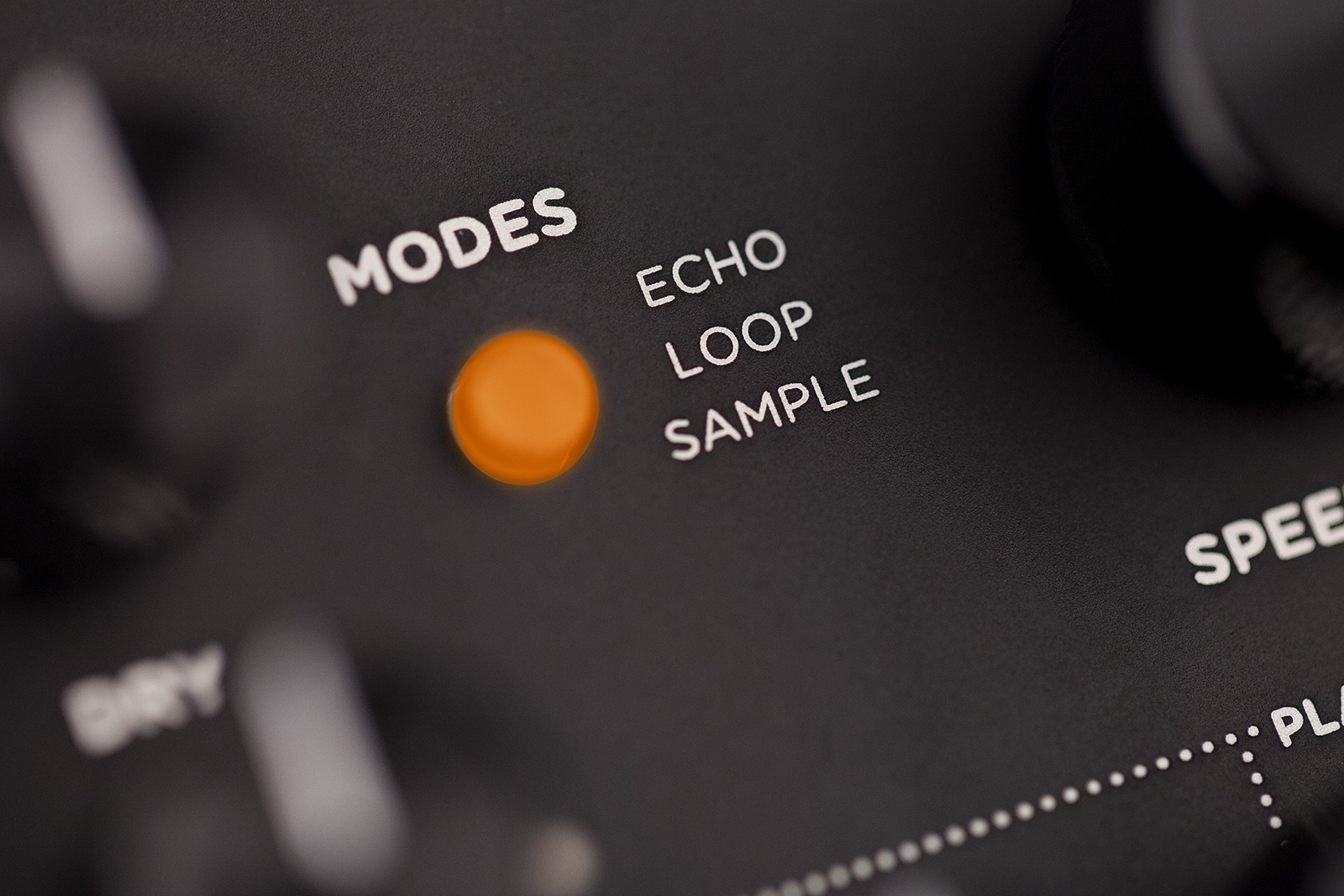 Just like one of our favorite moving head tape echo machines, Magneto gives you a Sound on Sound mode (LOOP Mode).
Just like one of our favorite moving head tape echo machines, Magneto gives you a Sound on Sound mode (LOOP Mode).
When you enter LOOP Mode, the machine is already recording, just like a traditional tape echo machine.
Tape head 4 is the looper playback head while tape heads 1-3 provide delay repeats for the incoming signal.
To set the length of your tape, press Tap once to set your splice “in” point, and press Tap again to set your splice “out” point.
All of the tone shaping knobs are active and affect your loop as it plays back and re-records.
Press Tap a third time to completely erase the tape. The REPEATS knob controls regeneration strength.
Set lower REPEATS level for loops that evolve over time.
The maximum loop length is 15 seconds at max SPEED, or two minutes at minimum SPEED.
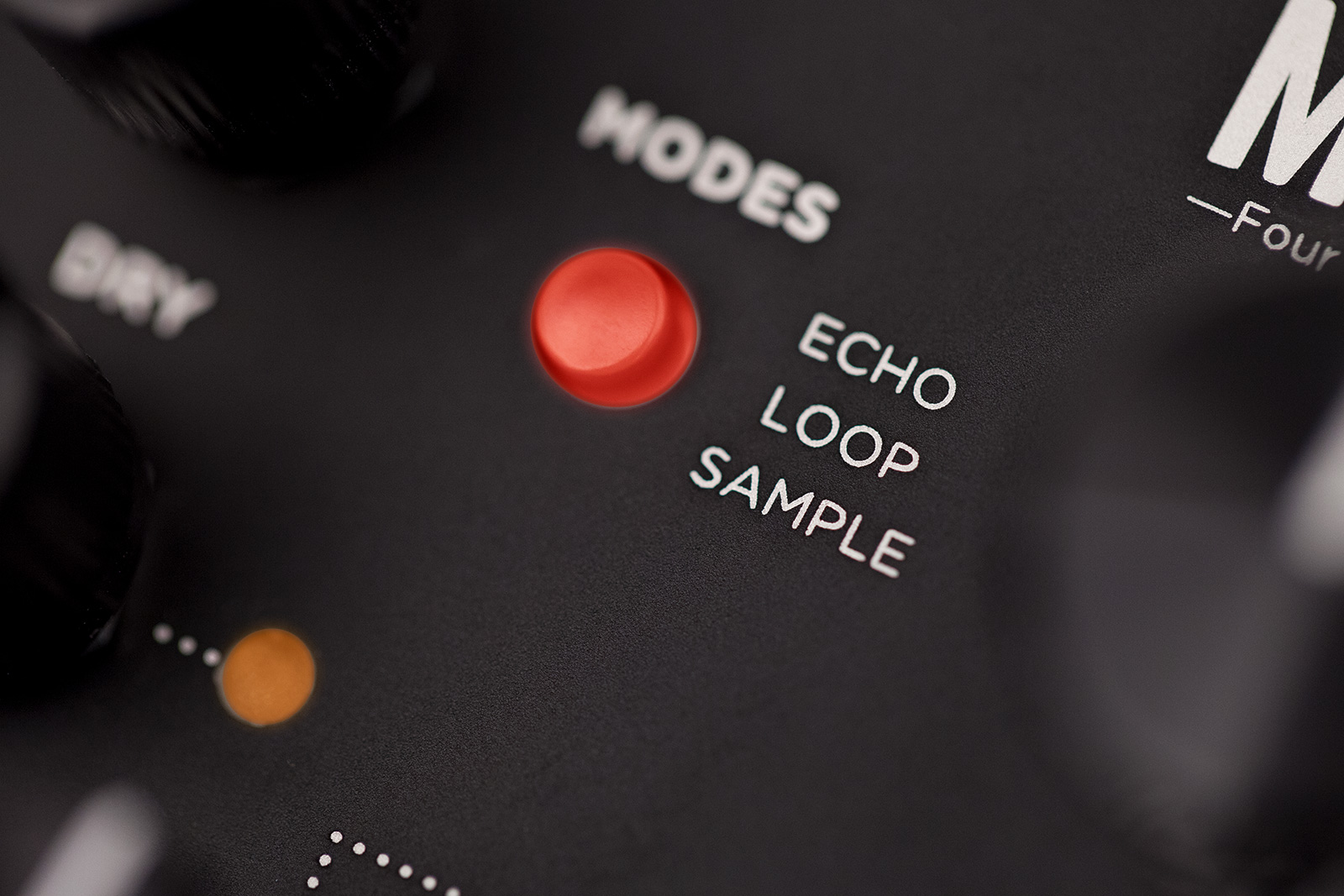 Magneto includes a Phrase Sampler for recording a loop that is the length between two taps of the TAP button.
Magneto includes a Phrase Sampler for recording a loop that is the length between two taps of the TAP button.
Just press the TAP button once to start sample recording, again to stop recording, and a third time to clear the sample memory.
You can trigger sample playback with the RESTART transport button or via the RESTART CV input.
The Speed knob or Speed CV determines the pitch and speed of the sample playback.
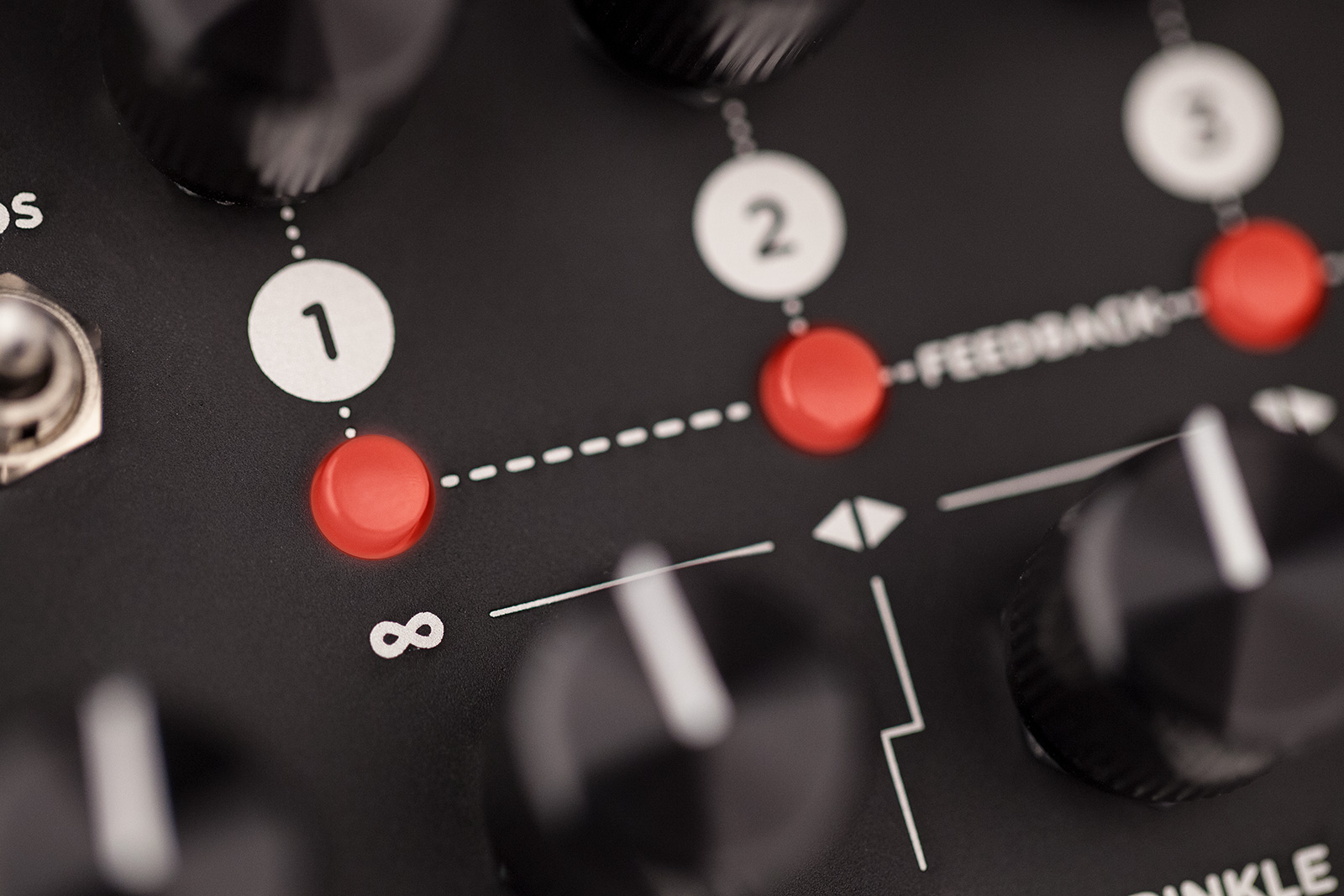 Want to just let Magneto continue to generate a soundscape while you play with some other modules?
Want to just let Magneto continue to generate a soundscape while you play with some other modules?
In ECHO mode or LOOP mode, just press the INFINITE transport button at any time to disable the Record head and allow Magneto to continuously play the most recent delay cycle or loop length audio.
You can also engage INFINITE and use Magneto as an oscillator.
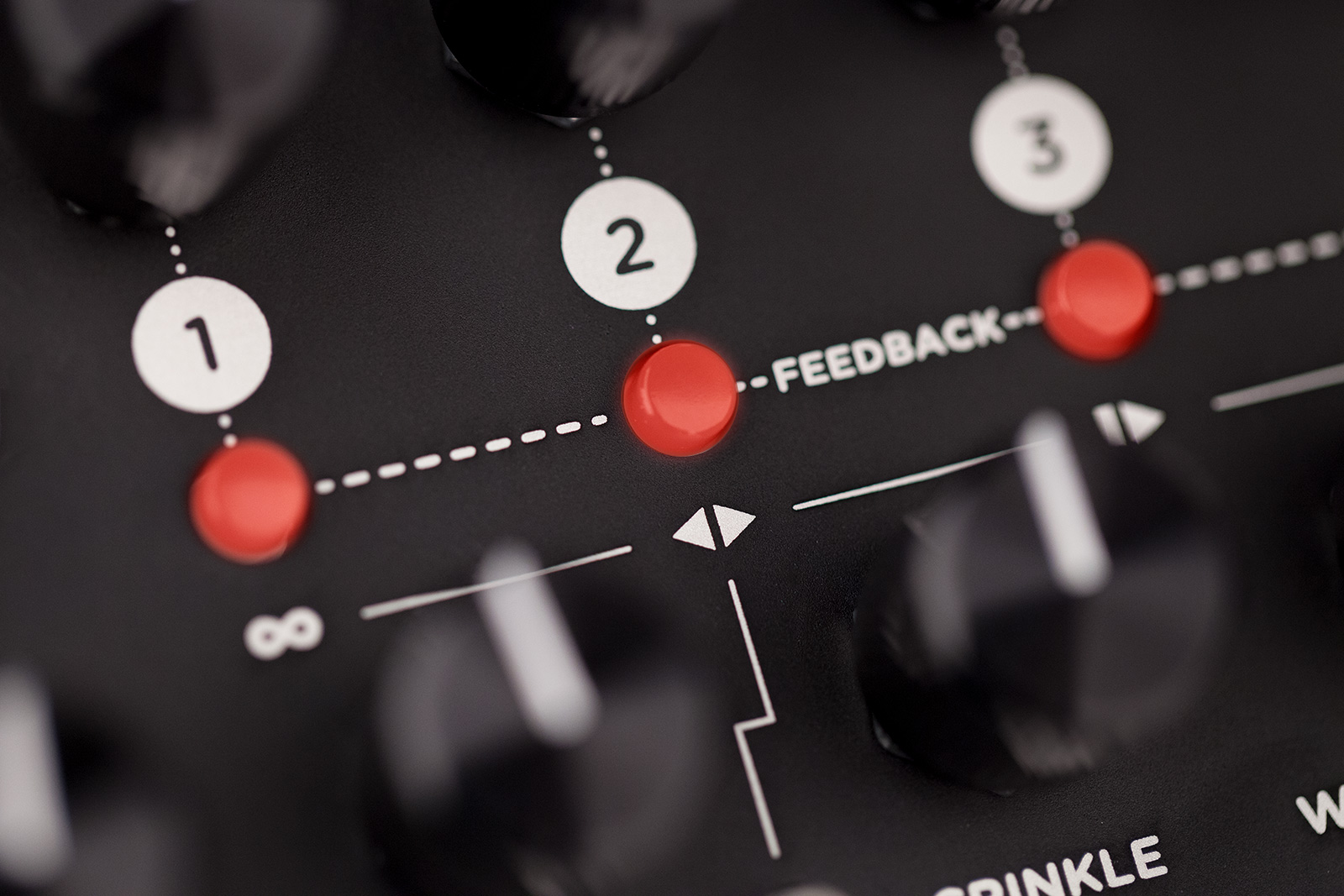 In ECHO mode, the entire tape contents (not just the current delay time) are played backwards when you press Reverse.
In ECHO mode, the entire tape contents (not just the current delay time) are played backwards when you press Reverse.
This allows for some very trippy effects when playing back sections that included SPEED manipulations or PAUSE events.
In LOOP or SAMPLE modes, the loop or sample length will play in reverse. You can continue recording new audio to layer with the reversed audio from the tape.
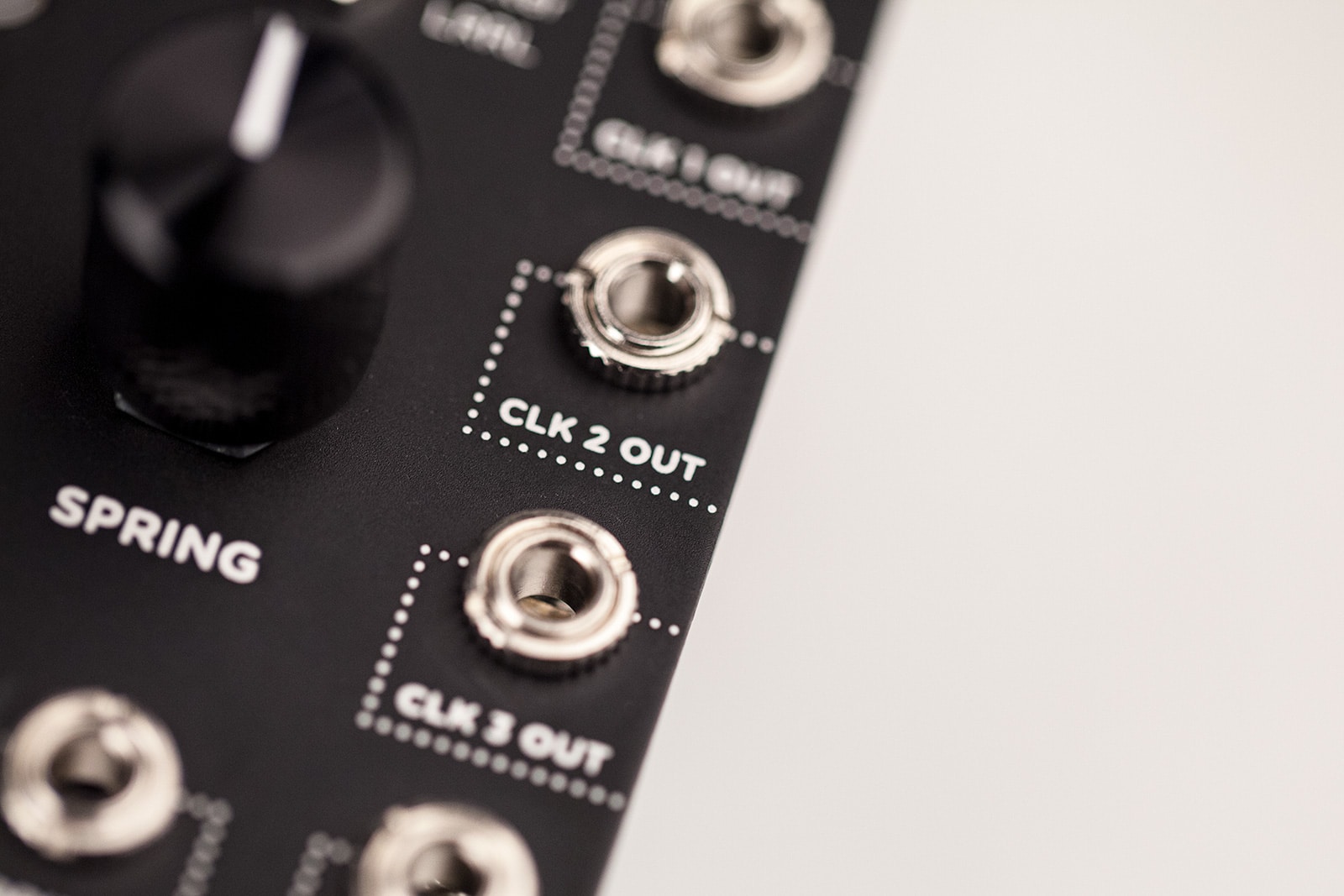 Each of Magneto’s four tape heads has its own Clock CV output, phase aligned with incoming Clock or Tap CV signals.
Each of Magneto’s four tape heads has its own Clock CV output, phase aligned with incoming Clock or Tap CV signals.
In ECHO mode with EVEN head spacing, Head 1 outputs 4/1 (16th notes), Head 2 outputs 2/1 (8th notes), Head 3 outputs 3/4 (dotted 8th notes), while Head 4 is 1/1.
Different values are available in TRIPLET and SHIFT head spacings.
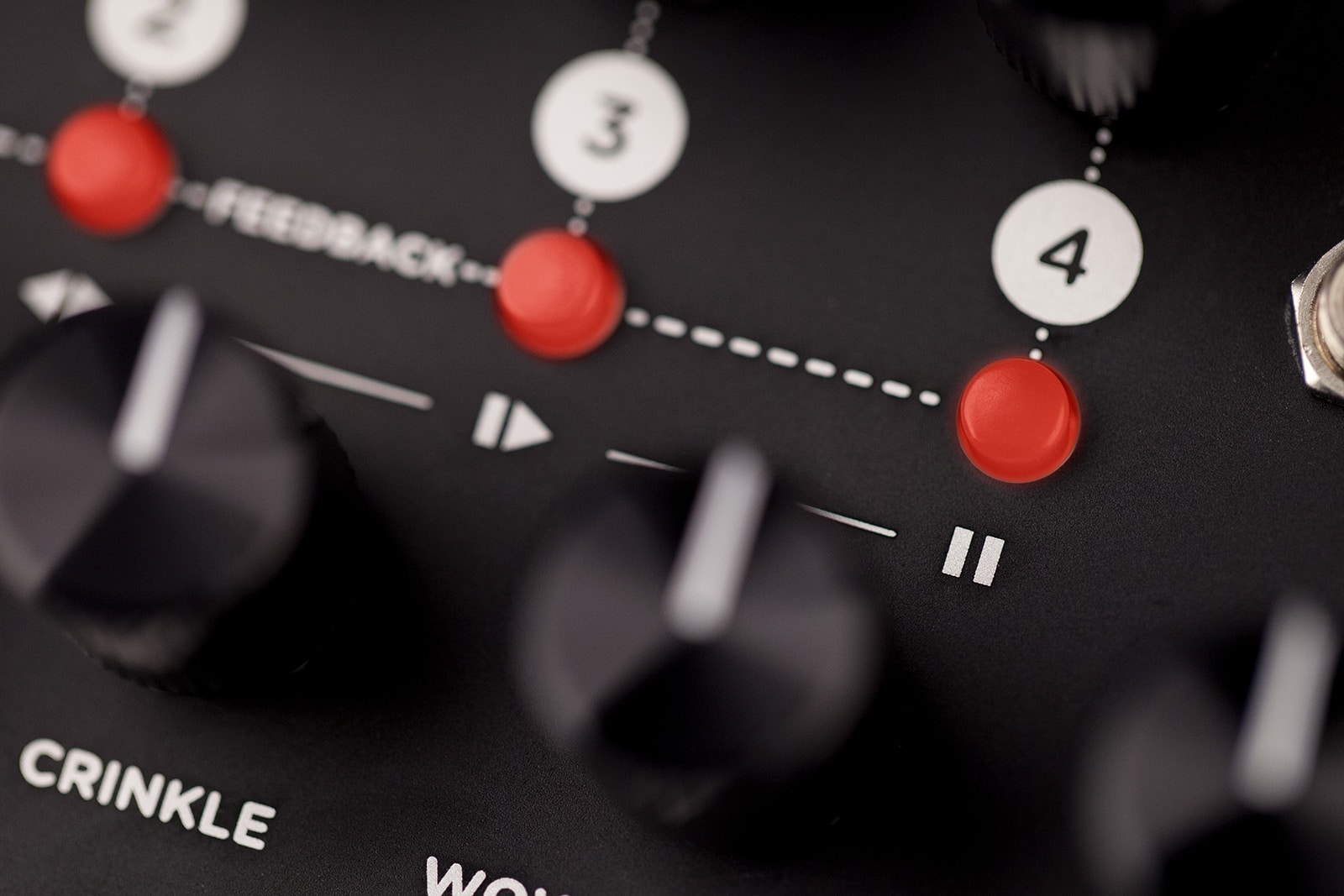 The PAUSE transport control is part of Magneto’s faithful recreation of a varispeed tape delay, with mechanical slowdown when pausing and mechanical speedup when coming out of pause.
The PAUSE transport control is part of Magneto’s faithful recreation of a varispeed tape delay, with mechanical slowdown when pausing and mechanical speedup when coming out of pause.
The speed of this mechanical slowdown/startup effect is user-definable.
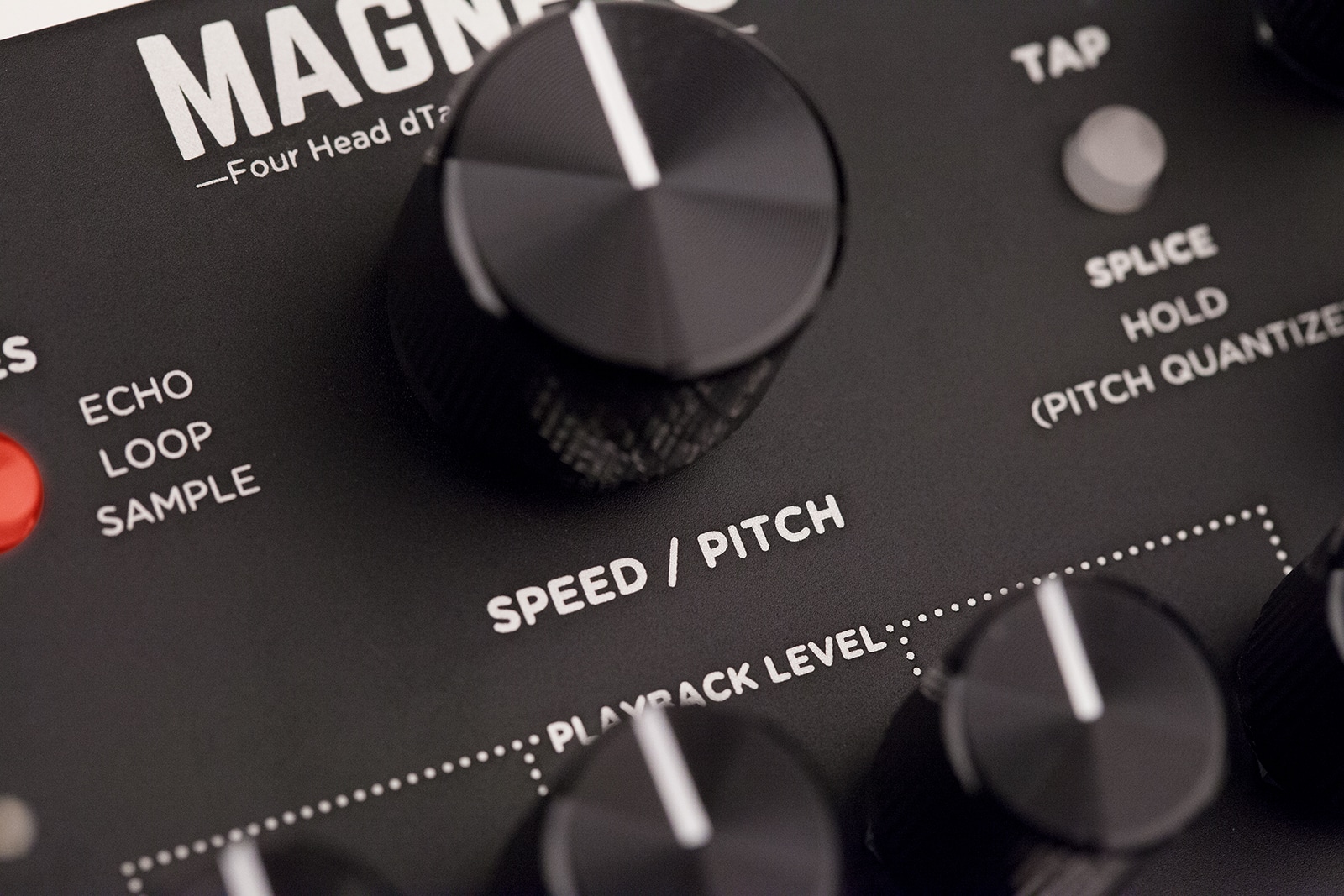 When the transport has come to rest after Pause is engaged, the Speed knob acts as an audio scrub tool.
When the transport has come to rest after Pause is engaged, the Speed knob acts as an audio scrub tool.
The length of audio in the scrub buffer is determined by the position of the Speed knob when Pause is engaged, from 750ms at maximum speed, to 6 seconds at minimum speed.
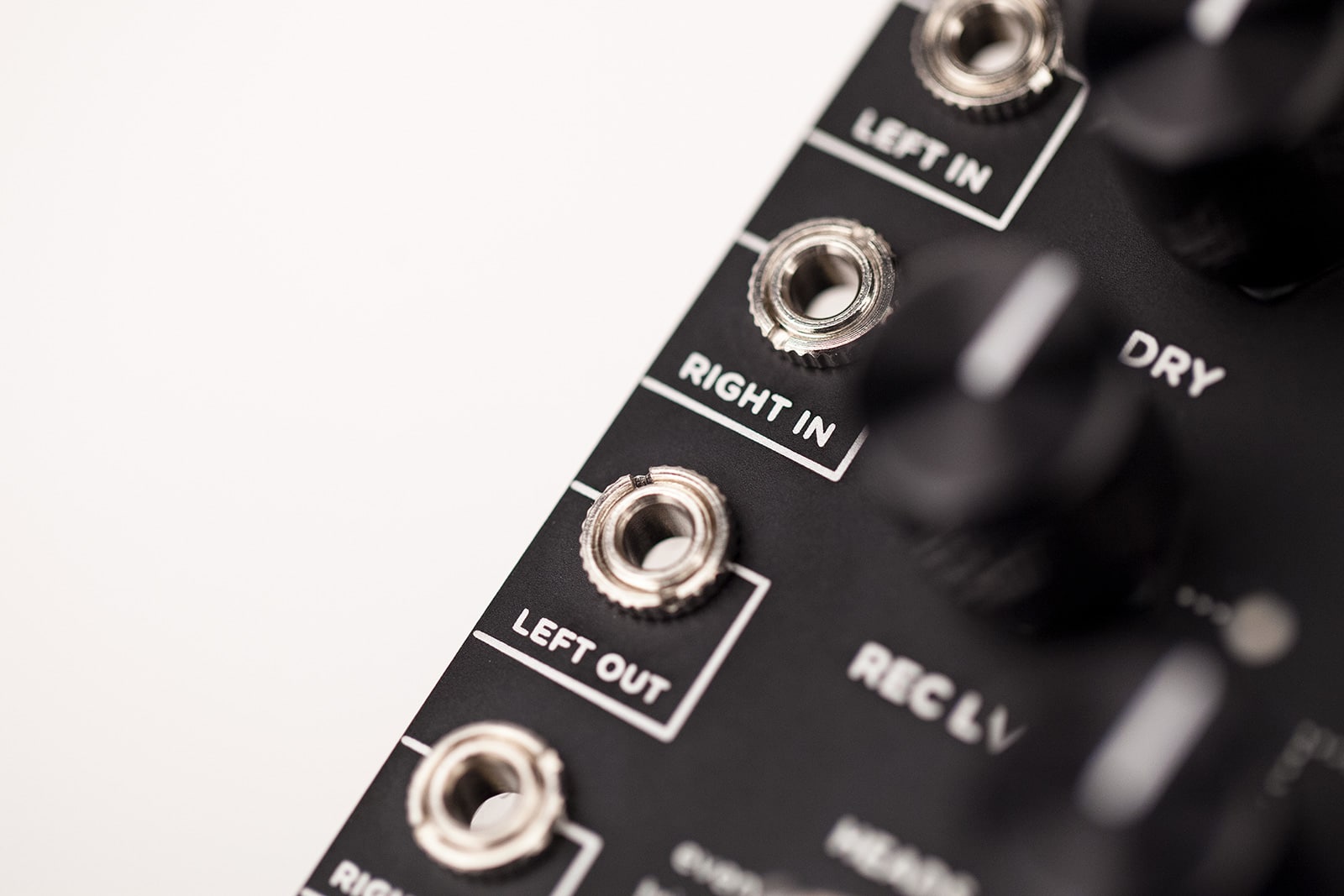 Double your dimension. Even if everything else in your rack is mono, plug into Magneto’s left input and enjoy instant stereo gratification.
Double your dimension. Even if everything else in your rack is mono, plug into Magneto’s left input and enjoy instant stereo gratification.
Each of Magneto’s four playheads can have their outputs panned hard left or right (or center).
There are three pan modes: LRLR, LRRL, and (customizable) Center.
With all heads centered, a psycho-acoustic stereo image is produced.
Adding Wow and Flutter or the built-in Spring Reverb enhances the stereo field even further.
















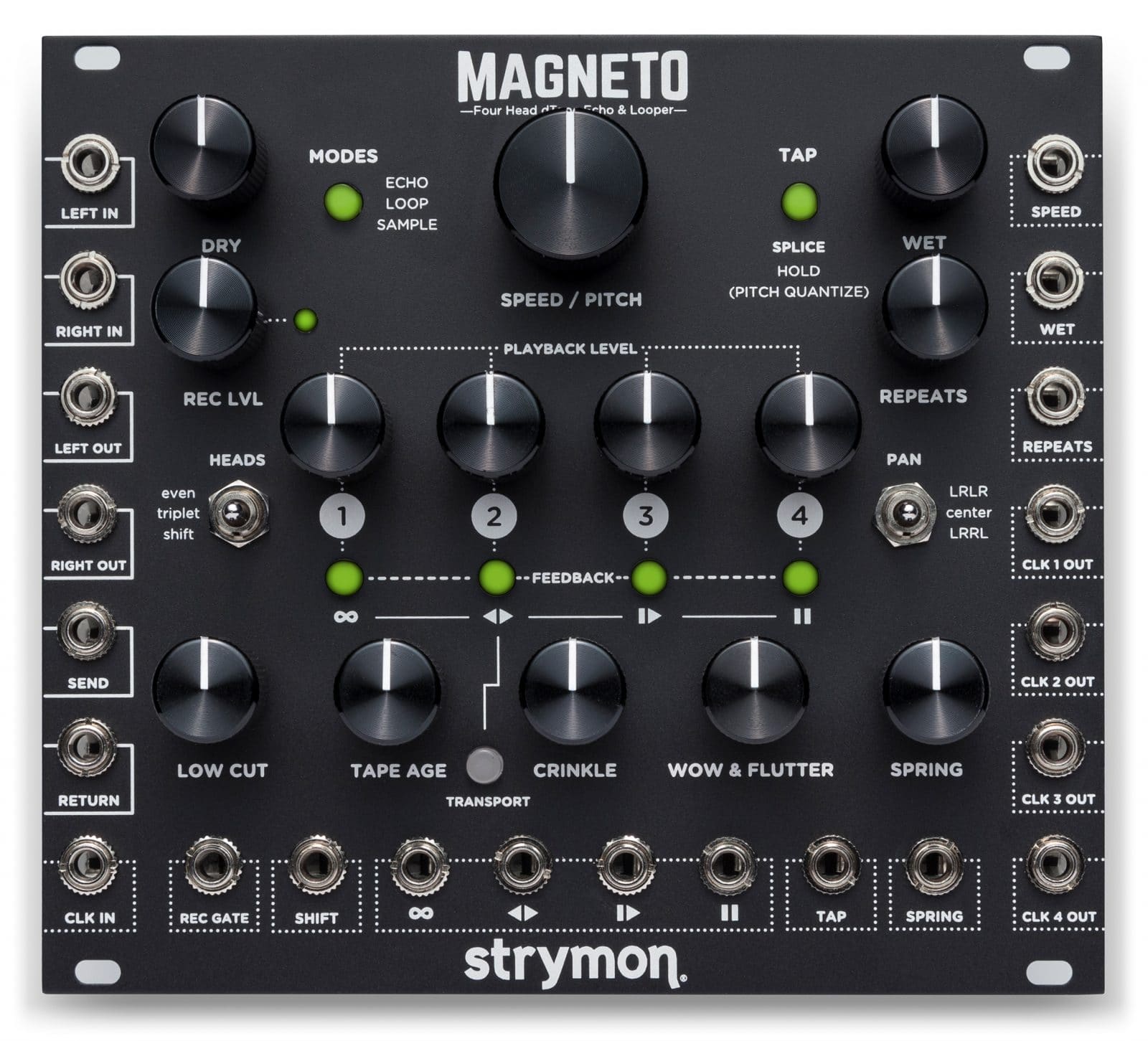
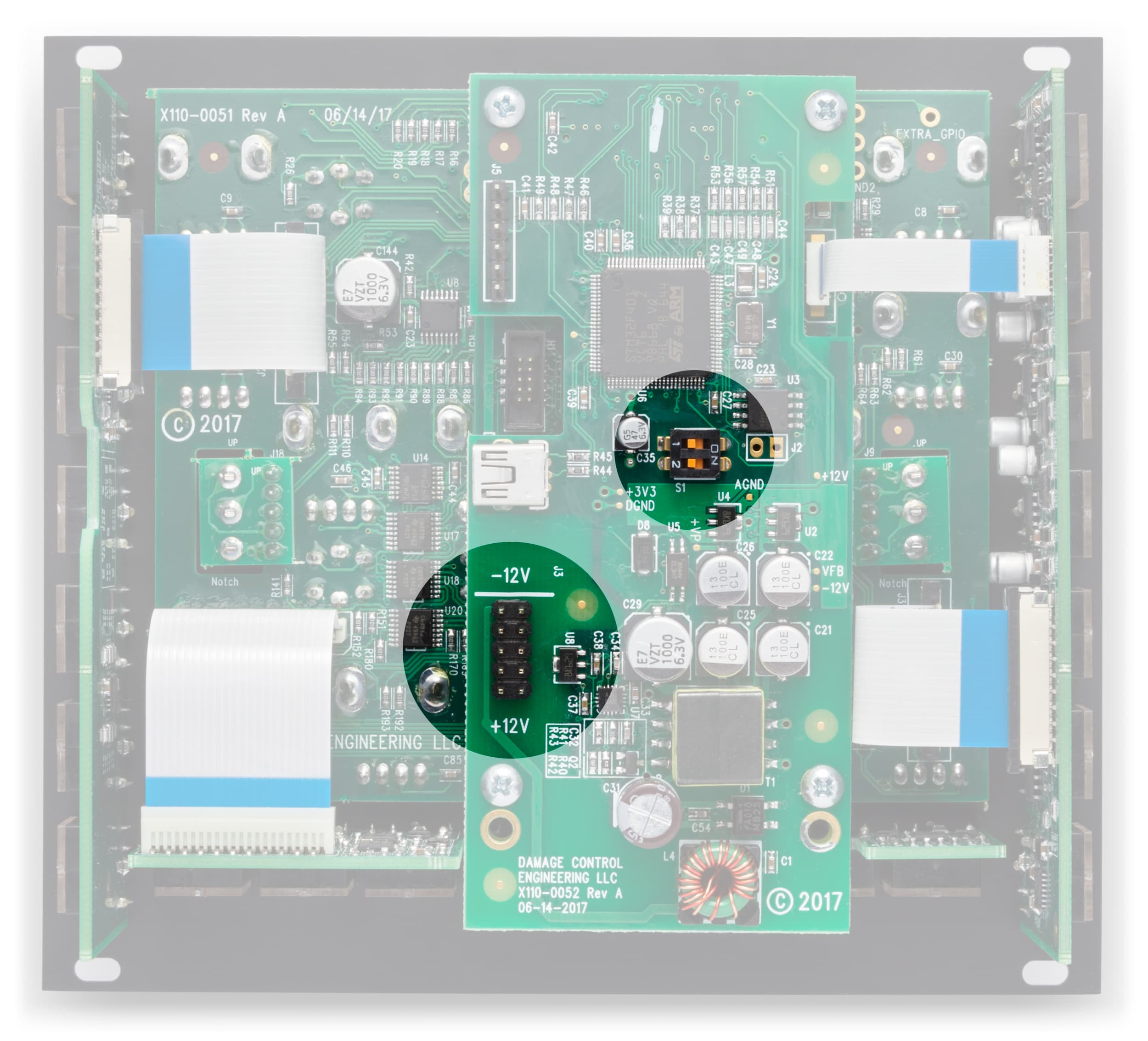

In a typical digital effect the dry signal gets converted to digital, causing conversion noise and latency. Signals are often attenuated before combining digital dry and wet, with makeup gain amplifying the conversion noise. To avoid this terrifying scenario, we’ve equipped Magneto with a completely analog dry path. Why go to all this trouble? Because the improvements in dynamic range and reduction in noise are so dramatic.
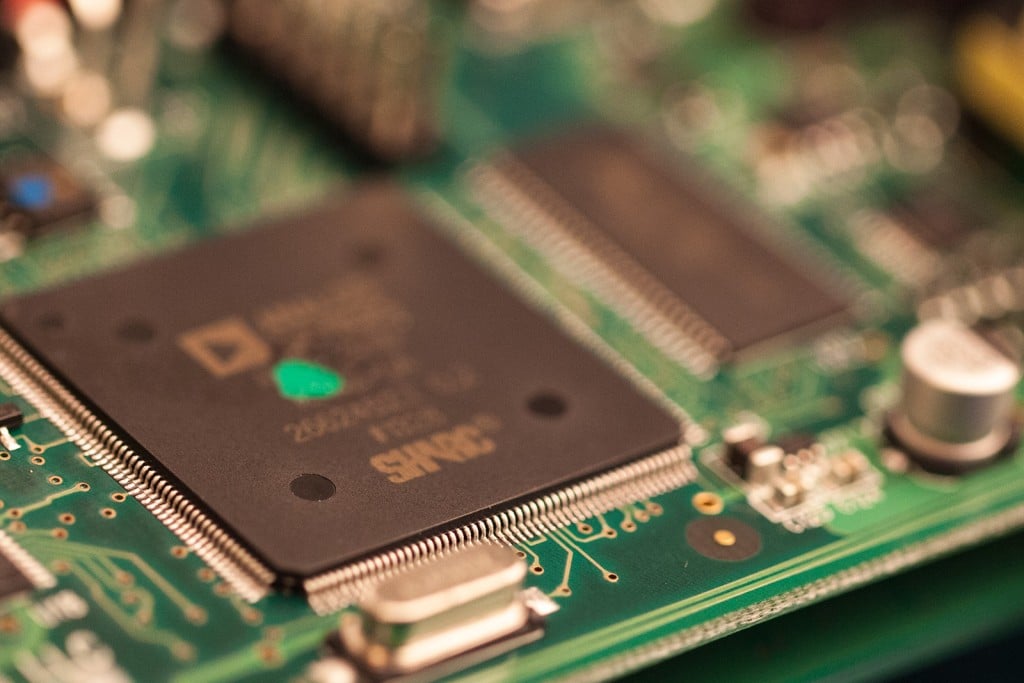
We’ve outfitted Magneto with the incredibly powerful Analog Devices SHARC ADSP-21369 processor, which provides a 366 MHz core instruction rate, and an incredible 2.4 Gigaflops of peak performance. Thanks to this high-powered technology platform within Magneto, we had the freedom to craft our processor-intense tape echo algorithms without compromise.
“While Magneto is entirely digital under the covers, its behaviour is anything but. Spin the large Speed/Pitch knob and the impression of an analogue delay is unmistakable.” — Sound On Sound
“…Magneto’s processor-intense dTape algorithm delivers bucketloads of character, with audio quality ranging from high-fidelity down to crinkly, warm and wobbly.” — MusicRadar








